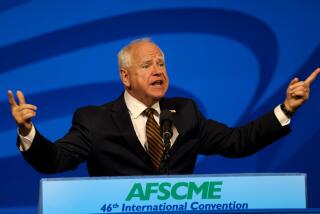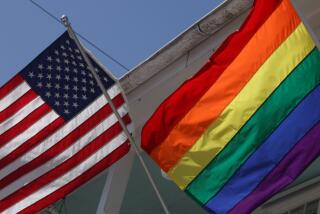Gays: Assimilated and Asexual?
The courts have set in motion the real possibility of gay marriage in the United States. HIV treatment, at least for those with health insurance, has vastly improved. Gay characters are regularly featured on network television. It would seem that the golden age of gay life in the United States has arrived. However, there is a growing sense among progressive gay thinkers that these provisional victories have come with a high cost. What has the gay community given up to reach this point?
In its 2003 decision striking down sodomy laws, the Supreme Court ruled that private consensual gay sex was constitutionally protected. But by the time the court ruled, gay sexuality had already moved beyond privacy; it had become invisible to the point of extinction. Both in terms of portrayals of gay men in the media and the rush to embrace traditional relationships as defined by heterosexual marriage, the gay community is discarding the very sexuality that the Supreme Court has validated.
Yet gay history is built on sexuality. In the 1970s, gay men purposefully alienated both straight Americans and lesbians by pioneering a culture of radical sexual abandon. Promiscuity and sexual experimentation were not merely tolerated, they were seen as political acts, crucial markers of gay male identity. That separatist era of sexual radicalism has now been dismissed as merely a period of excess leading to AIDS. In the current rush to assimilation, gay men have become ashamed of what is a vibrant legacy -- which, along with revolutionary movements like feminism and civil rights, played a valuable role in expanding American culture -- replacing the role of sexual provocateur with nonthreatening, nonsexual stereotypes.
This sexual disavowal is clearly seen in television shows such as “Will & Grace” and “Queer Eye for the Straight Guy.” These are essentially homosexual minstrel shows, in which gay men excel at being “the best friend” and “the style-maker” but are stripped of sexuality. Gay sex is nothing more than a running joke in these scenarios. The handsome and successful Will of “Will & Grace” rarely has a date, let alone sex, and is presented as incapable of having a relationship with anyone other than his straight girlfriends. The “buddies” of “Queer Eye” mince in front of their straight objects of affection, carefully stroking their arms and offering up nonthreatening style tips that are presented as the core of gay culture. Apologists for these “step-’n’-fetch-it” routines remind us that it is, after all, only TV. Yet many gay people mistake what is a stereotyped visibility for an indicator of acceptance and respect.
Pop culture is not the only sector where one sees indicators of an increasingly chaste gay culture. Ironically, the gay political establishment has used the Supreme Court’s legalization of gay sex as leverage to fight for the most conventional (and, some might say, least sexual) of heterosexual institutions -- marriage.
Marriage is a problematic goal in terms of gay sexuality. It doesn’t exactly deny sexuality, but it does seek to tame it. Yet the monogamous ideal enshrined in marriage is a challenge regardless of one’s sexual orientation. With the Census Bureau reporting that divorce rates are climbing and new marriages decreasing, it seems that gays are fighting to get into a burning house. If the legalization of gay marriage is achieved, will homosexuals be further marginalized if they can’t or won’t conform to a heterosexual ideal that even straight people can’t meet? Careful polling would help answer the question of whether marriage is even a widely shared goal within the gay community.
Many gays in the U.S. will breathe a sigh of relief at the idea that gay life is no longer defined solely by sex. And marriage may be a noble goal for some. But in redefining what it means to be gay in America, the gay community itself is on the verge of marginalizing those who refuse to conform to a system of heterosexual morality. The logic underlying a desexualized gay assimilation is understandable -- straight Americans can identify with gay people who fulfill the roles of spouse, friend, parent, caretaker, soldier and consumer. But what does the future hold for gay Americans who don’t have an interest in or the ability to play these roles according to the script? Leaving them isolated is too high a price for assimilation.
Real acceptance for gay people will come not through media stereotypes or wedding fantasies but through the insistence that gay people be seen as they really are. That will mean that gay television characters (beyond the rarefied demographics of HBO and Showtime) will be seen having the range of sexual and loving relationships that straight characters experience. Even more difficult will be the task of creating a gay political agenda that can embrace the choice of marriage without dismissing those who choose a nonmonogamous path. Sex is never an easy subject in this country, but gay Americans should not shy away from it as a vibrant part of their legacy.


